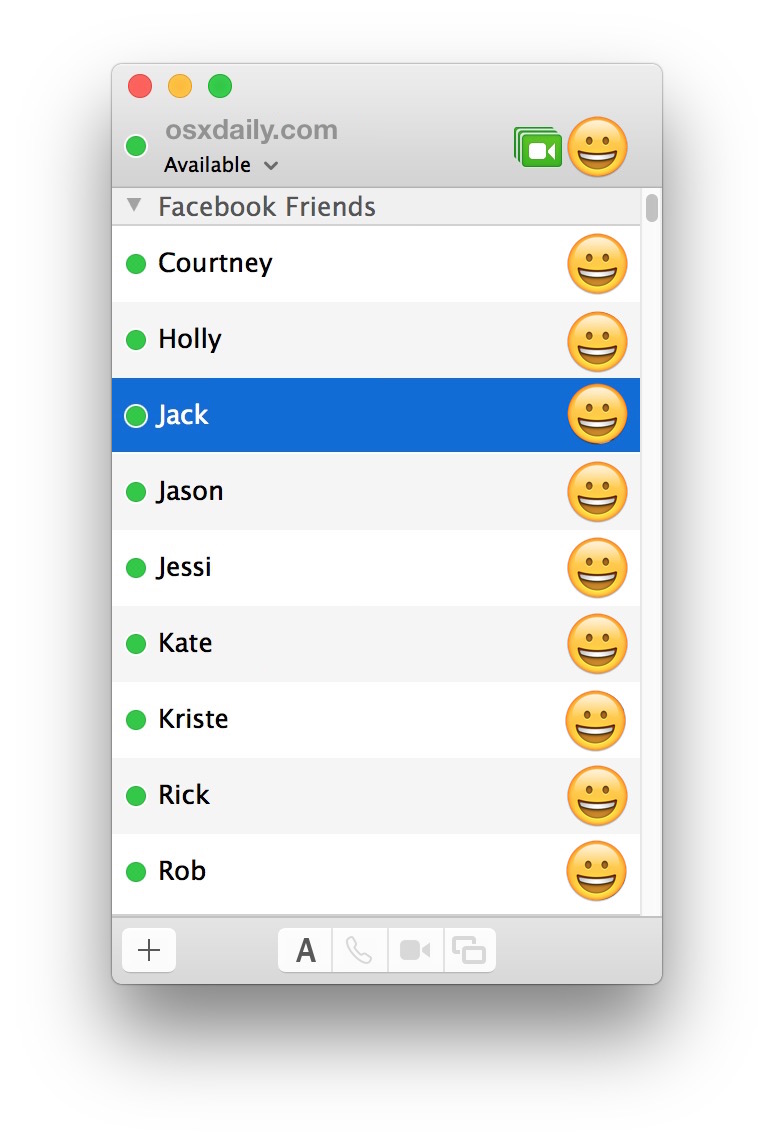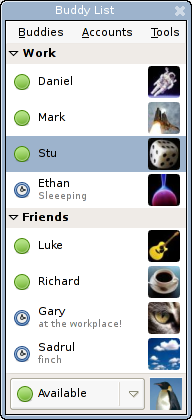Aug 21, 2014 For instance, you can receive an iMessage on your iPhone, and theoretically, the same message should be on your Mac. But that is all theory, because in practice, it doesn’t always works the way it should. In some cases, iMessages won’t sync between your iPhone, iPad, and Mac, leaving you to wonder what is going on.
Mail User Guide
Use Mailbox Behaviors preferences in Mail to change where draft, sent, junk, deleted, and archived messages for an email account are stored.
To change these preferences in the Mail app on your Mac, choose Mail > Preferences, click Accounts, then click Mailbox Behaviors.
Note: Mail stores messages in the mailbox you specify for each option.
If you select a mailbox on the mail server, the messages are available when you use your email account on another computer. Mail selects the best mailbox for your account; before choosing a different server mailbox, check with your email account provider.
If you select an On My Mac mailbox, the messages are stored on your Mac and are available only there.
The settings you see vary depending on your account type.
Option | Description |
|---|---|
Drafts Mailbox | Select a mailbox on the mail server or on your Mac to store draft messages. This option is available only for IMAP accounts. |
Sent Mailbox | Select a mailbox on the mail server or on your Mac to store sent messages. This option is available only for IMAP accounts. |
Junk Mailbox | Select a mailbox on the mail server or on your Mac to store junk messages. This option is available only for IMAP accounts. Note: Select this option on each Mac where you’ll use your account, to avoid having two Junk mailboxes in the Mail sidebar. |
Erase junk messages | Mail automatically deletes junk messages at the specified time. Select a setting other than Never to avoid exceeding storage limits set by your email account provider. |
Trash Mailbox | Select a mailbox on the mail server or on your Mac to store deleted messages, or choose None (deleted messages are removed and aren’t available in the Trash mailbox). This option is available only for IMAP accounts. |
Erase deleted messages | Mail erases deleted messages at the specified time. Select a setting other than Never to avoid exceeding storage limits set by your email account provider. If you selected None for Trash Mailbox, you can have Mail permanently delete messages automatically. If your email account provider sets up the server to delete older messages, the messages are deleted regardless of how you change this option. |
Archive Mailbox | Select a mailbox on the mail server to store archived messages. |
If you use an Exchange account, you can choose to store draft, sent, junk, and deleted messages on the server, and when to erase junk and deleted messages.

Apple's Messages is a great app for communicating with pretty much everyone, since it handles both iMessages between Apple devices and even SMS text messages for non-iPhone users. However, since its inception, there have been many syncing issues that marred the reputation of Messages, such as erased threads only disappearing from one device, conversations showing up out-of-order, and more.
Apple added Messages in iCloud in iOS 11.4 and macOS 10.13.4 last year, and it is a big improvement on keeping all of your Messages activity (yes, including text messages) in sync across multiple devices. Here's how to set it up!
How to turn on Messages in iCloud
- Make sure that you are logged in to the same Apple ID across all of the devices that you want to access your Messages in iCloud on.
- On your iPhone, launch Settings.
- Tap on your iCloud and Apple ID settings (your name and image at the top).
Select iCloud.
- Toggle Messages to ON (green).
Once this is done, ensure that your iPhone is connected to a Wi-Fi network so that your entire Messages history can be uploaded for the initial sync. Apple doesn't want to drain your battery or cellular data plan doing this, so that's why you must be on Wi-Fi for the first sync.

After the syncing process (time depends on how much history you have, and larger files may need more time), that's it! All of your Messages history from your iPhone is saved in iCloud with tight end-to-end encryption, and can be accessed on any other device with your Apple ID as long as it's running iOS 11.4 or later.
But to get this working on your Mac, you'll need to do the following:
- First, check and make sure that you're logged in to the correct Apple ID as your phone, otherwise, you'll find nothing.
- Launch Messages on your Mac.
- Open the Preferences for Messages (⌘ and , or just click Messages and select Preferences on the menu bar).
- Go to the iMessage tab in the preferences settings.
Check off the box for Enable Messages in iCloud.
- Your message history should synchronize after that box is checked. If not, click on the Sync Now button to force a sync.
Again, depending on your Message history, it may take a while for everything to download onto your Mac. Naturally, you'll want to be on a good, stable Wi-Fi connection when doing this, just to make sure there are no hiccups in the process.
After the initial syncing, from this point forward, everything should theoretically remain in sync with each other. This means when you get messages and reply, they should show up on all linked devices in the correct order, including images, videos, and other files. Anything you delete from one device should be deleted from the rest as well.
How exactly does Messages in iCloud work?
it's pretty easy, but here's how Messages in iCloud works:

- All of your messages, whether they're iMessage or SMS, are stored in iCloud using your Apple ID or iCloud account.
- Apple has end-to-end encryption on all of your messages while it's stored in iCloud, so your data is safe and secure as they get uploaded and downloaded on each device to keep everything synchronized.
- Photos, video, older messages, and other file attachments are stored in iCloud, so local storage on your device is spared.
- For users who backup their devices with iCloud, this means smaller backups, as Messages are no longer included in the backup due to the implementation of Messages in iCloud.
- When you get a new iPhone, iPad, or Mac, just enable Messages in iCloud on it with your Apple ID, and you'll get all of your Message history on it, rather than just new messages.
What to do if Messages in iCloud isn't working for you
Of course, even with Apple's tagline of 'it just works,' sometimes it really doesn't. Here's what to you should try if you're encountering some issues:
- Give it time! Again, if you have a lot of Messages history, it will take time to upload and download all of that on other devices. Just be patient, and if it's not running smoothly after a while, then you can try these other steps.
- Try cutting down on the number of files. To do this, navigate over to iPhone Settings, then General, select iPhone Storage, and then scroll down a bit to find Messages. Choose the type of media you want to get rid of, tap on Edit to pick files, and then delete them.
- This may sound dumb, but make sure that you are logged in to the correct Apple ID on all of your devices. Some of us have more than one, so it's always a good idea to double check!
- Try rebooting the devices involved. If that doesn't work, try turning Messages in iCloud off and back on again.
Check your Wi-Fi or cellular connections. Nothing can upload or download if the data connection is having issues. You can try toggling the Wi-Fi off and back on, or disconnect it completely and reconnect.
- If none of those worked, then you may want to Reset Network Settings. On your iPhone, go to Settings, then General, scroll down to the bottom for Reset, and then choose Reset Network Settings. This wipes your saved Wi-Fi networks and passwords, and these settings go back to factory default. So you'll need to enter those Wi-Fi passwords all over again, but all of your other data remains where it is.
Alternatives to Messages in iCloud
Even though Apple is fairly good about protecting the privacy of their customers, it's understandable that some people may not feel comfortable with all of their Messages history being stored up in 'the cloud.' Fortunately, there is a way to view and manually move your iMessage history and attachments over to a new Mac.
Aim Doesn't Show Up On Mac Osx Messages App Download
How to find your iMessage archive
- On your Mac, go to Messages and then open the Preferences.
- Under General, make sure that you check off the box for 'Save history when conversations are closed.
Launch your Finder, click on Go in the menu bar, and click on Go to folder.
- Type in ** /Library/Messages**.
- There may be three things you see in the folder: Archive, Attachments, and a file named 'chat.db'.
Archive contains all of your past messages that you have already closed or saved. Attachments is fairly self-explanatory, but it contains photos and videos you've sent and received. The chat.db file contains history of all currently active conversations.
How to transfer your Message history to a new Mac
- Turn on both your old and new Macs.
- Open an Airdrop window on both Macs. Or you could also use File Sharing.
- Open up the ** /Library/Messages** folder (using the above method) on both the old and new Mac.
Drag that folder on your old Mac over to Airdrop.
- On your new Mac, if you've been using Messages, make a copy of the folder and move it to the Desktop. Delete the original data from the folder of the new Mac.
- Drag the Messages folder that you copied from the old Mac over to the now-empty Messages folder of your new Mac.
- Restart the new Mac.
If you need a more in-depth dive into this process, make sure to check out our original how-to guide on viewing and moving your iMessage data to a new Mac.
Any questions?
Apple's Messages in iCloud has made life so much simpler, but nothing is ever perfect. And if you aren't sure about storing sensitive data like your entire Messages history in the cloud, then there are still alternatives.
Have any questions regarding Messages in iCloud? Leave them here and we'll do our best to answer them!
We may earn a commission for purchases using our links. Learn more.
My heartThis timelapse of macOS 10.0 through 10.15 is a nostalgic wonder
Aim Doesn't Show Up On Mac Osx Messages App Free
The very first version of macOS, or Mac OS X as it was known, arrived almost 20 years ago. This video takes us through every major update the Mac has seen since in one amazing timelapse.